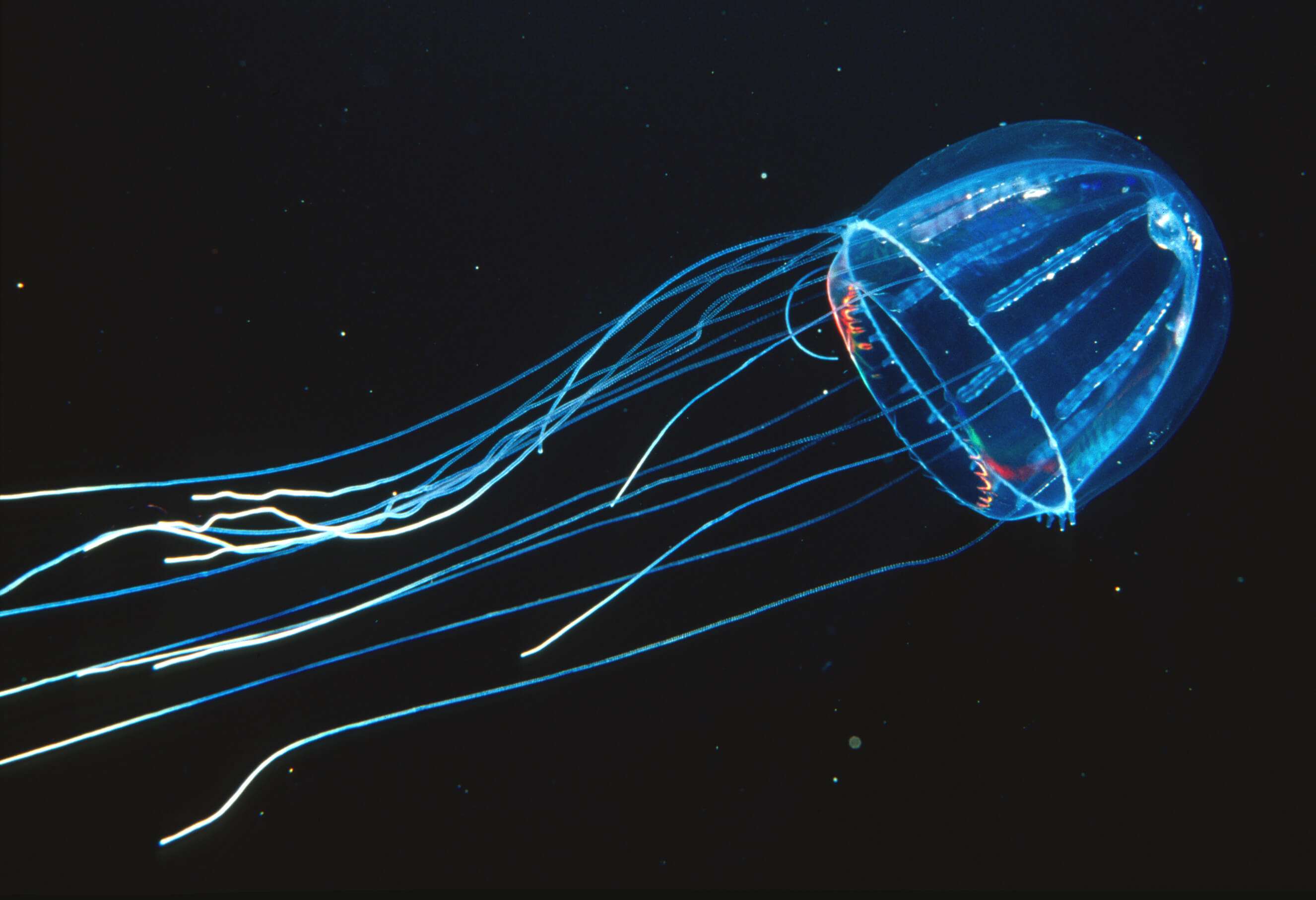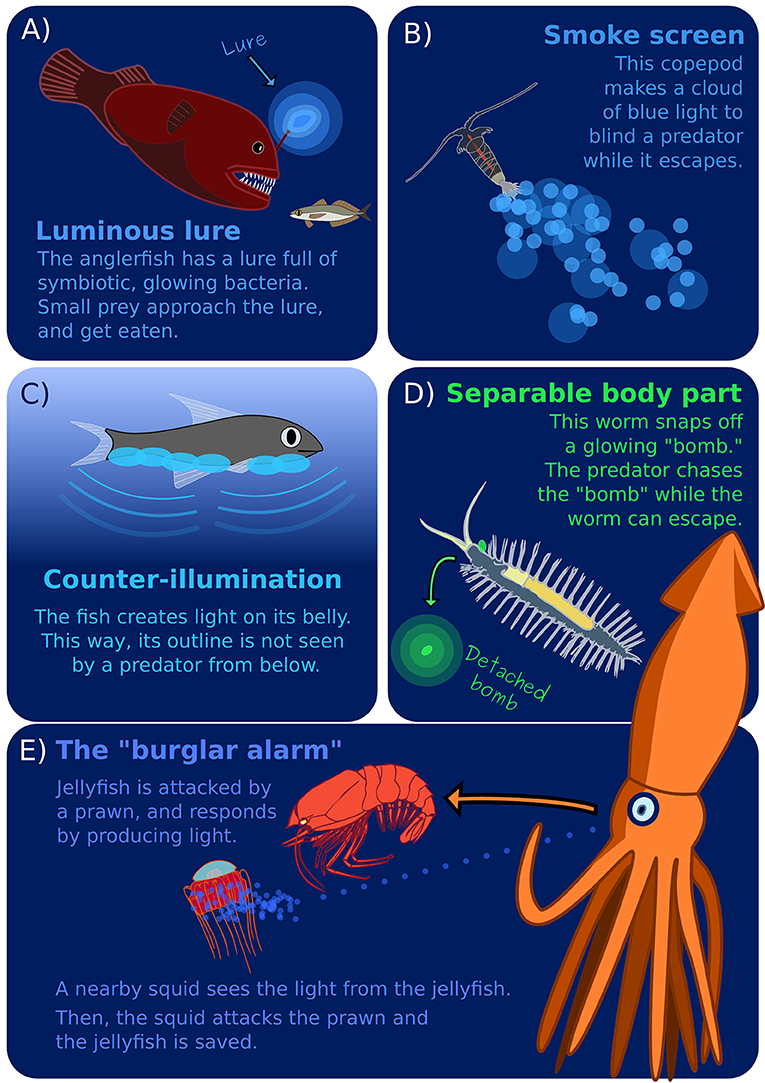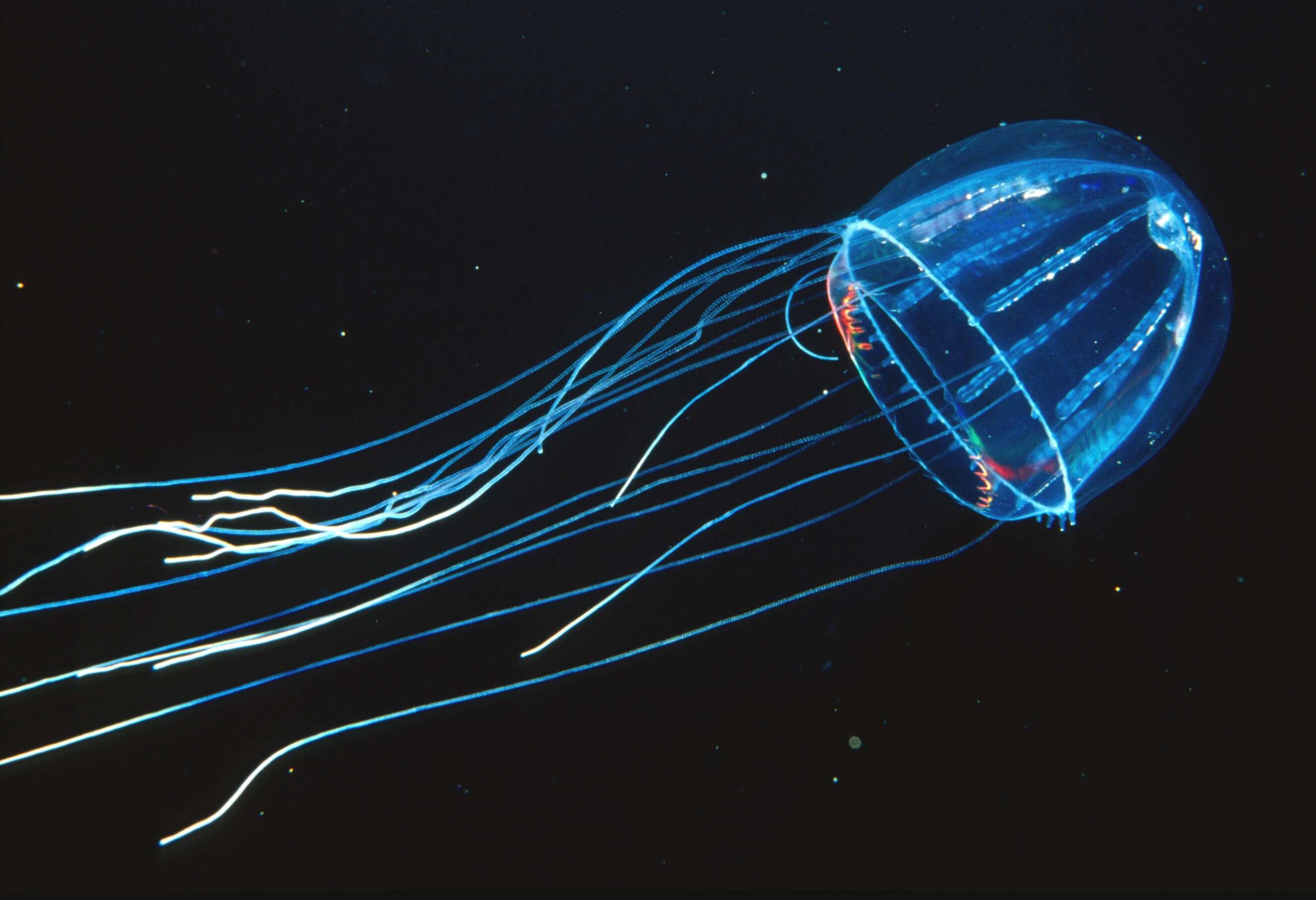Exploring the Mysteries of Deep-Sea Life and Bioluminescence
Did you know that approximately 98% of ocean species live in, on, or just above the seafloor? The deep sea is an incredible realm filled with surprising life forms that have adapted to extreme conditions. This vast habitat covers over 60% of our planet’s surface and reaches depths of about 11,000 meters in places like the Mariana Trench. Remarkably, more people have ventured into space than have explored the depths of our oceans!
As we dive deeper into the mysteries of the deep sea, we find unique adaptations that allow life to thrive in such a harsh environment. For instance, deep-sea organisms endure immense pressure, sometimes exceeding 1,100 atmospheres. To survive, many of these creatures possess specialized membranes and proteins that function optimally under these extreme conditions. Moreover, some species produce piezolytes, which help stabilize their biomolecules under high pressure.

Image Credit: Monterey Bay Aquarium
Cold Temperatures and the Absence of Light
Another striking characteristic of the deep sea is its cold temperatures, typically ranging from -1 to +4 degrees Celsius. Many organisms have adapted by developing flexible proteins and membranes, preventing them from freezing. The absence of sunlight beyond 200 meters results in fascinating adaptations such as bioluminescence. This natural phenomenon allows organisms to produce light for communication, predation, and camouflage, making the dark depths a vibrant stage for survival.
Interestingly, about 75% of deep-sea animals are bioluminescent, each employing this ability for various purposes. For instance, the anglerfish uses a glowing lure to attract unsuspecting prey, while others may release clouds of luminescent mucus to escape predators. Such strategies ensure their survival in a hostile environment where visibility is minimal.

Image Credit: Frontiers for Young Minds
Surprisingly, some deep-sea species exhibit incredible longevity. For instance, the black coral can live for over 4,265 years, while certain fish species, like the orange roughy, can surpass 150 years. This extended lifespan is a remarkable feature of deep-sea life, allowing for stable populations in an environment where food can be scarce.
Unique Reproductive Strategies
One of the most bizarre mating behaviors is displayed by the anglerfish. The male bites onto the female’s body and remains attached for life, essentially becoming a permanent sperm bank. This odd adaptation ensures that the female always has access to sperm, addressing the challenges of finding a mate in the vastness of the deep sea.
Hydrothermal vents and cold seeps are also extraordinary ecosystems discovered in the deep ocean. Hydrothermal vents, first identified in the late 1970s, are rich in life and thrive on geothermal energy rather than sunlight. These unique communities host fascinating species, such as giant tubeworms, which have symbiotic bacteria capable of converting toxic hydrogen sulfide into sugars, essential for their survival.
Debunking Myths of the Deep Sea
A common misconception about deep-sea life is that all creatures are blind, adapting exclusively to low-light conditions. In reality, many deep-sea organisms have enhanced senses and can navigate effectively using bioluminescence. Furthermore, despite the harsh environment, the deep sea boasts immense biodiversity, with many species still undiscovered. Scientists believe that there may be even more biodiversity in the deep sea than in rainforests!
Interestingly, deep-sea gigantism is a phenomenon where certain species grow to unusually large sizes. Creatures like the giant squid and giant isopod exemplify this trend. The reasons behind this growth pattern remain a subject of ongoing research, but it adds to the allure of deep-sea biology.
The Future of Exploration
As technology advances, scientists are increasingly able to explore the deep sea. This exploration reveals more about the complexities of its inhabitants and the adaptations they have developed to survive. With each expedition, we unlock more secrets of the deep ocean, expanding our understanding of this mysterious and vital part of our planet.
In conclusion, deep-sea life is a realm of surprises, showcasing remarkable adaptations to extreme conditions. From bioluminescent creatures to the enigmatic black coral, the deep sea continues to fascinate and inspire. As we strive to explore and protect these wonders of nature, we gain invaluable insights into the resilience of life on Earth.
References:
Illuminating the facts of deep-sea bioluminescence – link
The Dark Ocean Is Full of Lights – link
Categories: Do you know, Nature, Paranormal, Science, Wildlife
Tags: Adaptations, Bioluminescence, Deep Sea, Marine Biology, Ocean Life
Religion: None
Country of Origin: Global
Topic: Deep-Sea Life and Bioluminescence
Ethnicity: None



